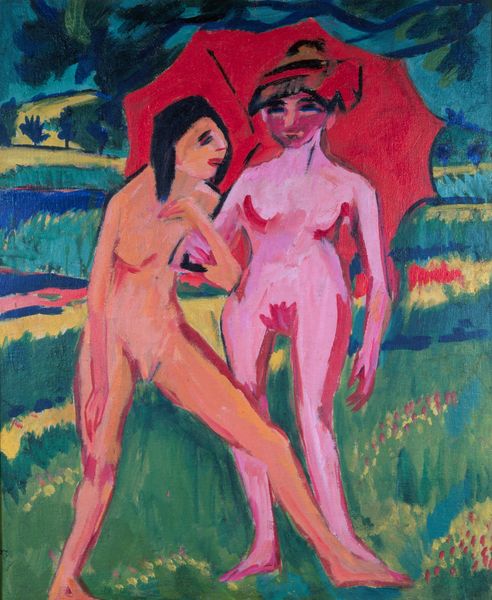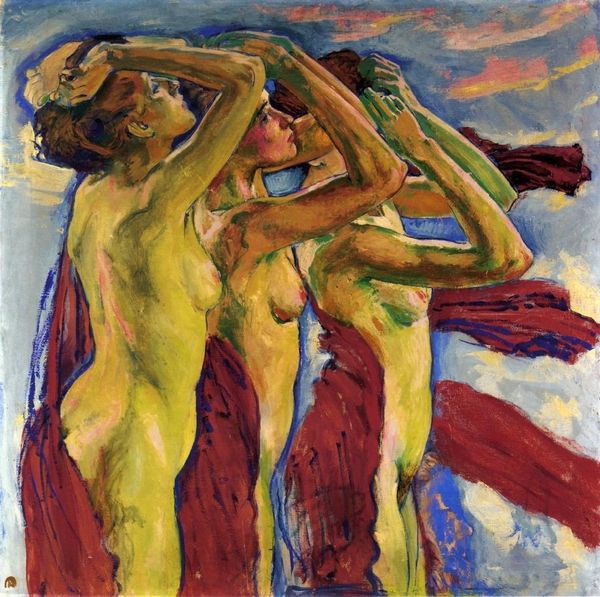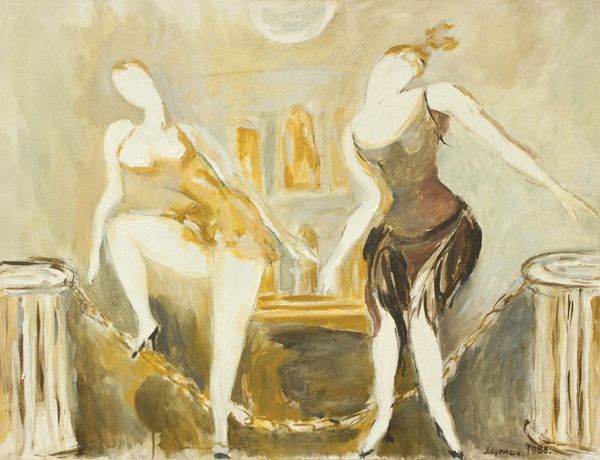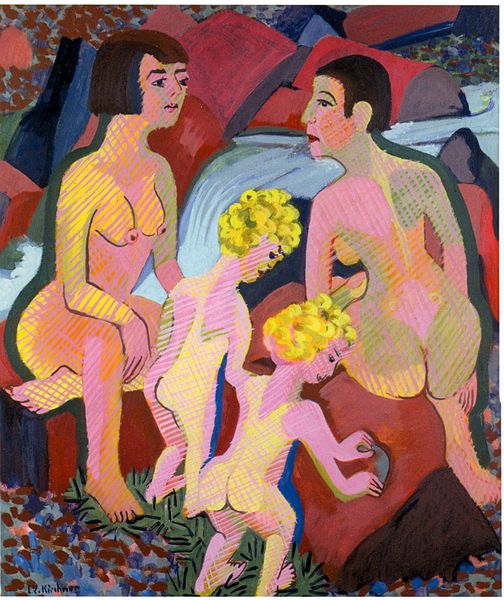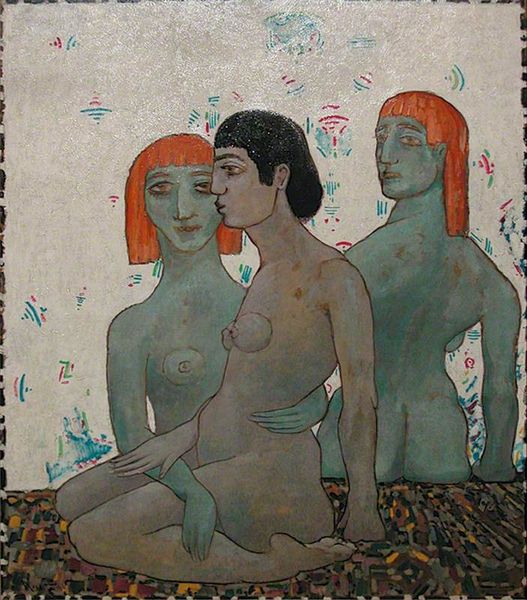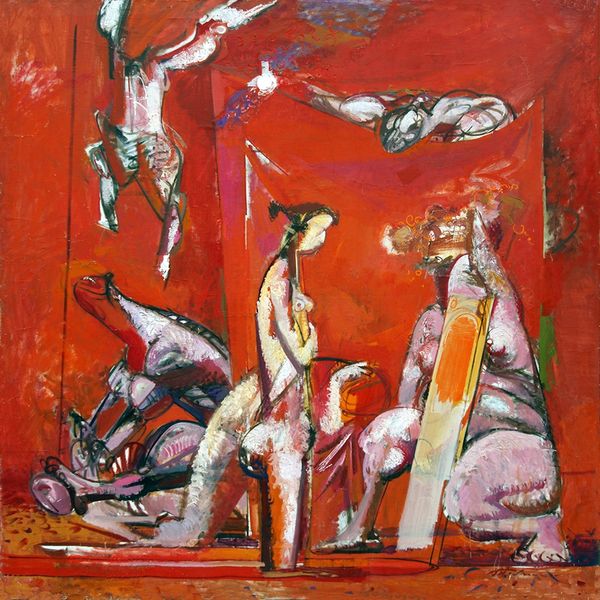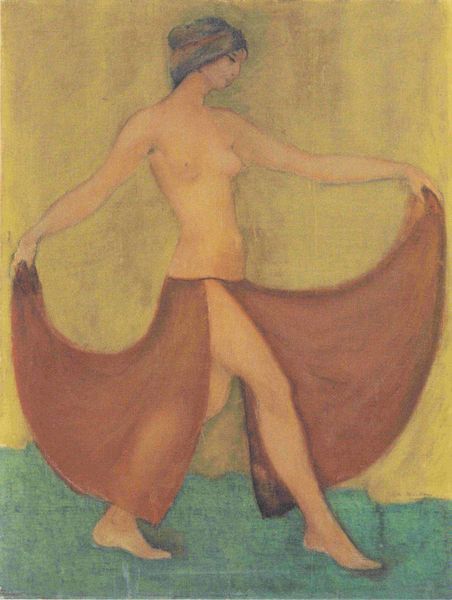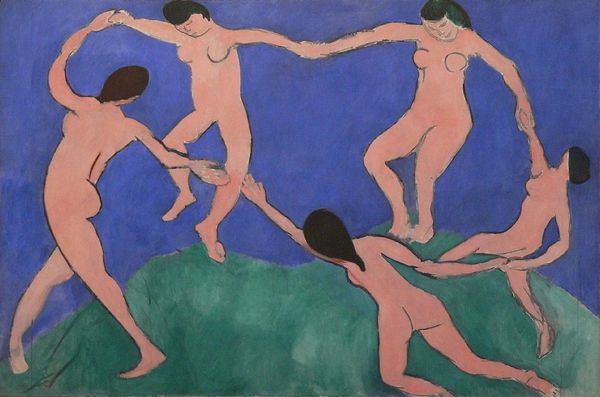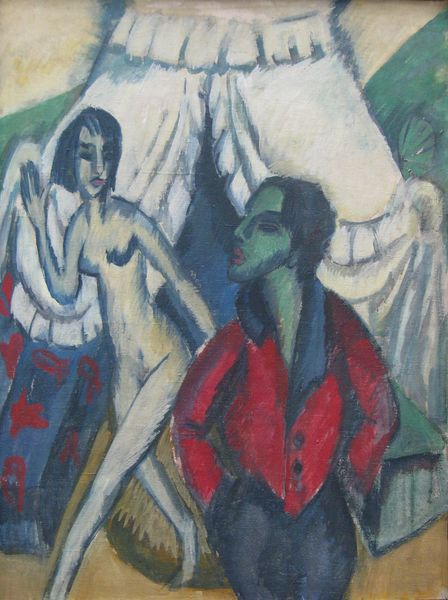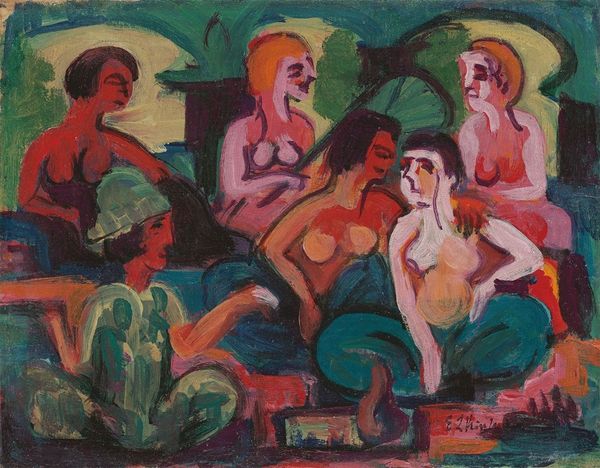
Copyright: Public domain
Curator: Ernst Ludwig Kirchner’s “Dance School,” painted around 1914 and now residing at the Neue Pinakothek in Munich, certainly provokes a response. What are your immediate impressions? Editor: Unease, primarily. There's something unsettling about the juxtaposition of these stylized figures, caught between awkwardness and performance, set against this backdrop of fleshy pink and maroon hues. The elongated forms and distorted features communicate a sense of vulnerability. Curator: Kirchner was a key figure in the Expressionist movement, and we can see the tenets of that movement throughout this oil on canvas. Consider the raw application of paint, the visible brushstrokes, and how these create a textured surface. This is very much about the materiality, wouldn't you say? Editor: Absolutely, the materiality matters, and that raw quality is essential to unpacking its themes. Look at the construction of gender here: Kirchner presents a tableau vivant with women in various stages of undress, observed perhaps, by a man in a starkly contrasting, formal, red suit. The gaze and the dynamics of looking become paramount, pointing to the historical objectification of the female form in art and its connection to male dominance. Curator: Interesting point, the contrast between the textured figures and the smooth swathes of pink emphasizes that tension between the observer and observed, perhaps mimicking that male and female dynamic. It is compelling to consider the socio-economic position of these women during this period as well. I am most fascinated by how Kirchner manipulates the medium of oil to achieve the intense emotive response from the viewer. Editor: Precisely, this is no simple scene; the artificiality screams from the canvas. Who has access to leisure, education, or the ability to be an art subject during wartime? We're looking at issues of power, class, and the complex negotiations of modernity in early 20th century Germany. Curator: Understanding the labor, class and economics helps one understand these visual, thematic choices made by Kirchner. Looking closely at his manipulation of the materials on hand and those he has access to adds to that historical significance you mention. Editor: This painting demands we consider the layered histories of the body, gender, and representation—a vital discussion given Kirchner's own biography and the socio-political climate of his time. Curator: Yes, this piece is more than just visual representation, it embodies social criticism, as you pointed out so aptly. Editor: Agreed; by acknowledging these contexts, we enrich the experience of viewing art, inviting more critical dialogues, making the museum space an agent of change.
Comments
No comments
Be the first to comment and join the conversation on the ultimate creative platform.
